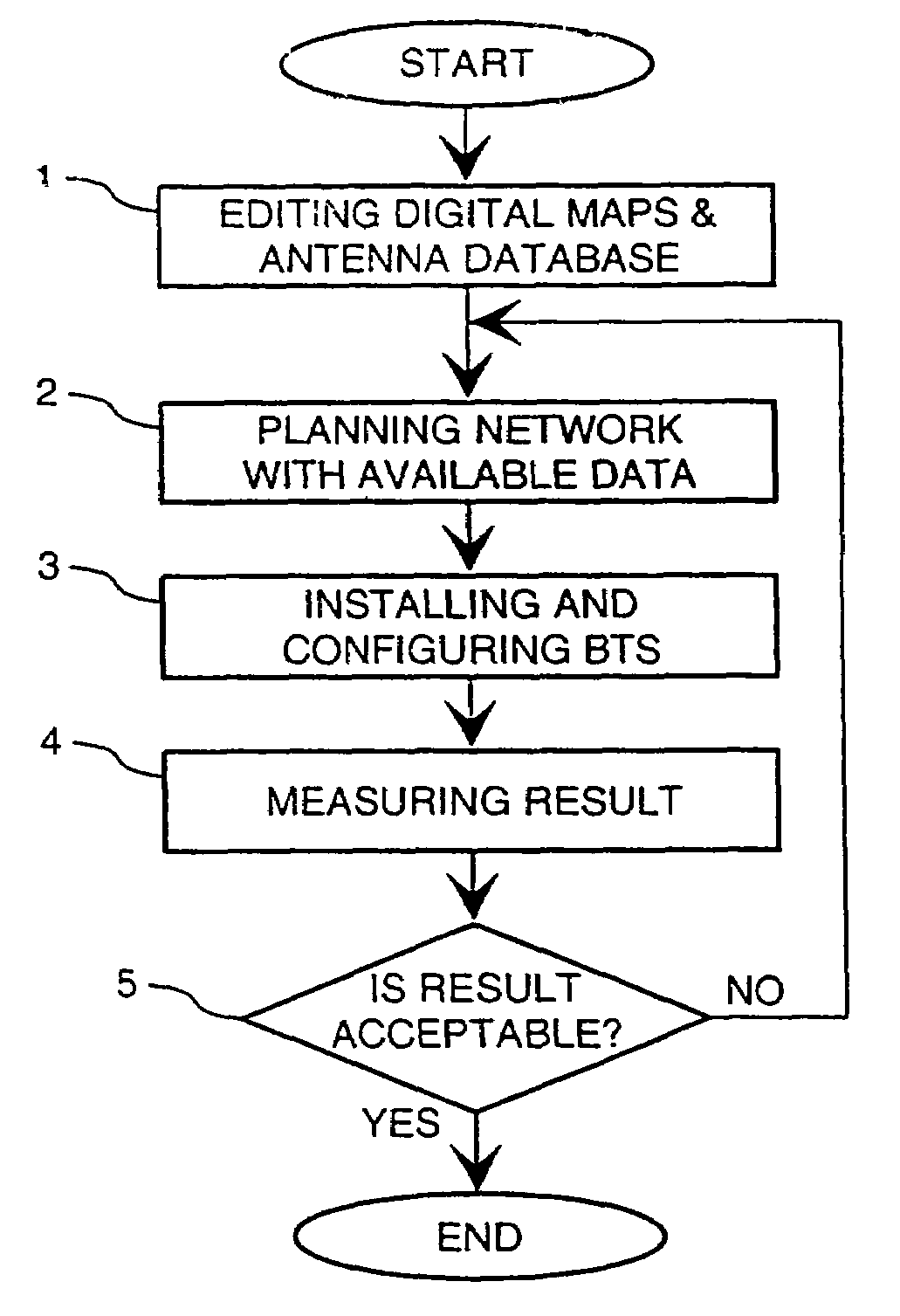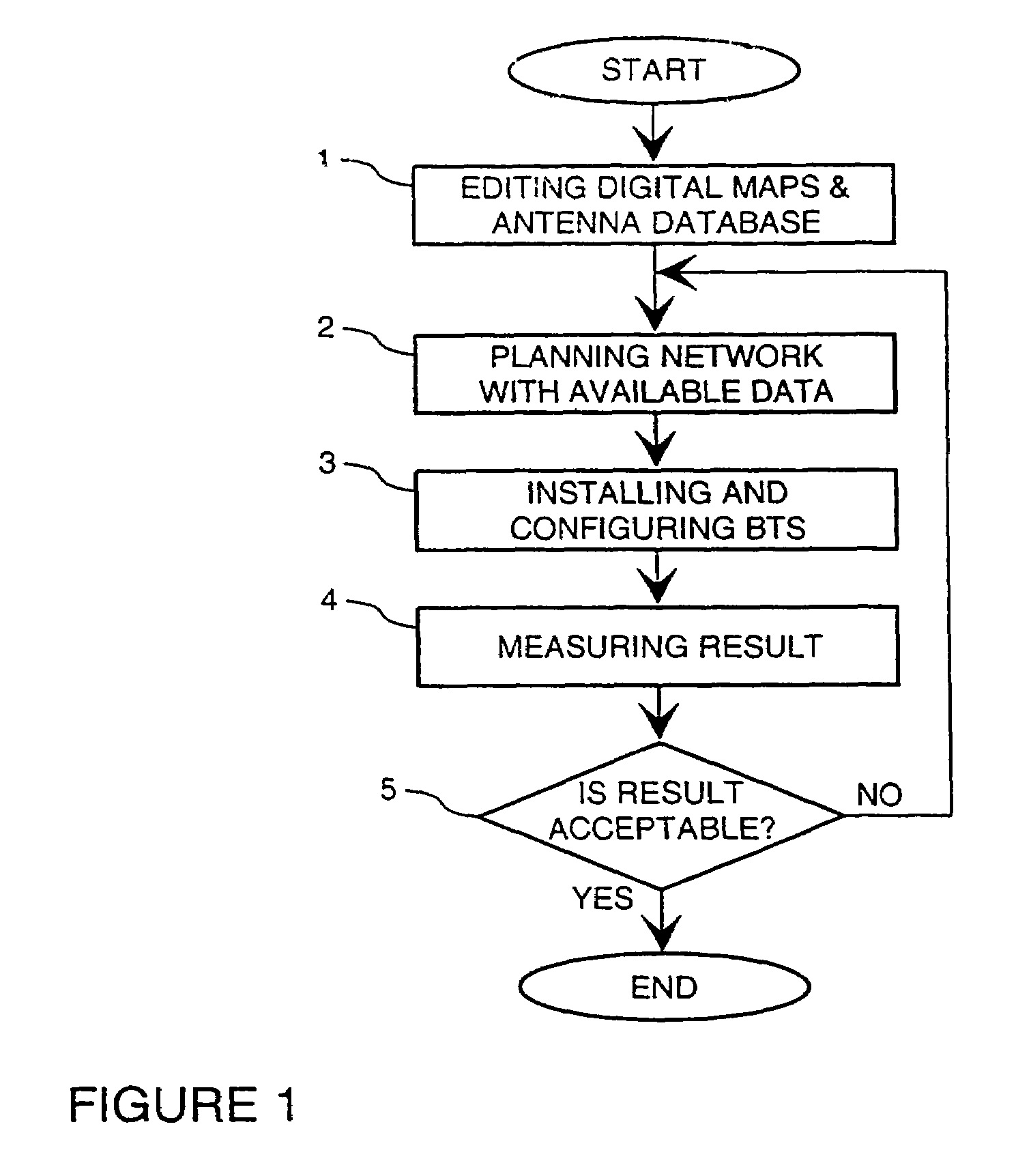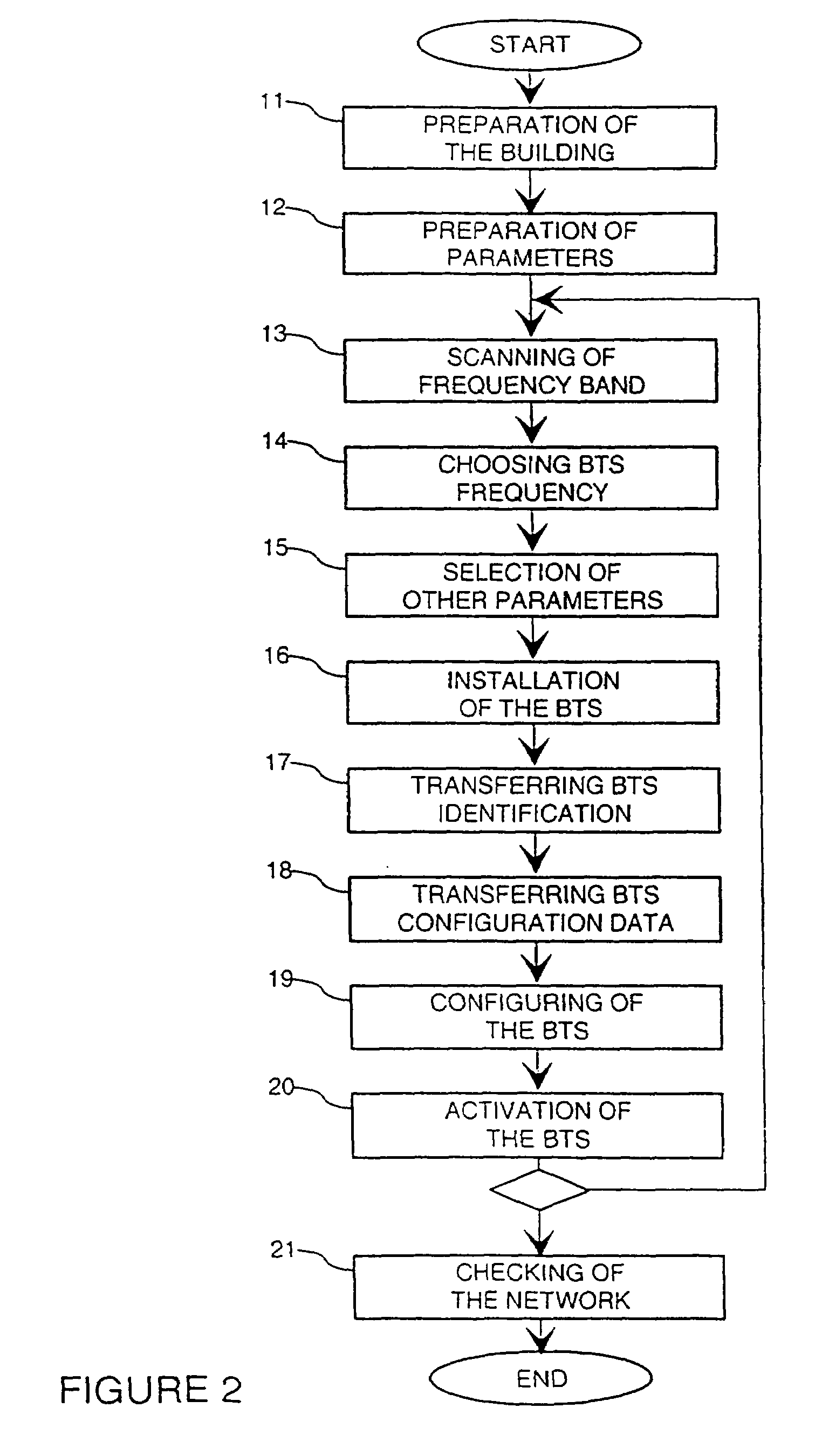Method and a mobile station for configuring a base station
a mobile station and base station technology, applied in the field of configuring base stations, can solve the problems of time-consuming prior art methods and time-consuming methods for configuring stations for specific installation areas
- Summary
- Abstract
- Description
- Claims
- Application Information
AI Technical Summary
Benefits of technology
Problems solved by technology
Method used
Image
Examples
Embodiment Construction
[0018]FIG. 1 was described previously in connection with description of prior art.
[0019]In one advantageous embodiment of the invention, installation of an indoor cellular network proceeds in the following four phases. This embodiment is illustrated by FIG. 2.
1. Preparation of the Building
[0020]In the first phase 11, the building is roughly inspected, if possible. Based on the inspection and maps of the building, preliminary locations for base stations are located. Preferably, a slightly larger number of preliminary locations are preplanned than will actually be used. Some locations are preferably prepared near entrances to the building to form a gateway to surrounding cellular network. Sufficient overlap with the surrounding network is necessary to allow smooth handover of connections from the in-building network to the surrounding network and vice versa. A data transmission network is constructed in the building based on these preplanned preliminary locations. For example, existin...
PUM
 Login to View More
Login to View More Abstract
Description
Claims
Application Information
 Login to View More
Login to View More - R&D
- Intellectual Property
- Life Sciences
- Materials
- Tech Scout
- Unparalleled Data Quality
- Higher Quality Content
- 60% Fewer Hallucinations
Browse by: Latest US Patents, China's latest patents, Technical Efficacy Thesaurus, Application Domain, Technology Topic, Popular Technical Reports.
© 2025 PatSnap. All rights reserved.Legal|Privacy policy|Modern Slavery Act Transparency Statement|Sitemap|About US| Contact US: help@patsnap.com



